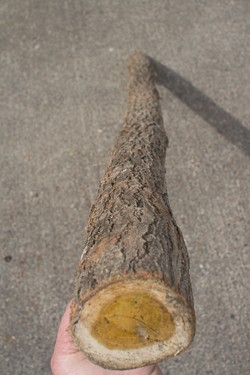Have you ever been fascinated by the idea of crafting your own bow and arrow? I still remember the thrill of my first attempt as a kid, grabbing a branch after a storm and some string, and watching a makeshift arrow fly – and then the disappointment when it snapped! Since those early, less-than-successful days, I’ve spent considerable time learning the art of bow making.
While creating a wooden bow can seem straightforward – find flexible wood, shape it, add a string – it can also quickly become complex. Questions about reflex, recurve, wood types like yew or osage orange, and costs can be overwhelming.
The good news is, it doesn’t have to be complicated, especially when you’re starting out. This guide will walk you through the simplest method to make a bow and arrow with minimal tools and expense. We’ll focus on the essential steps to get you started; you can always explore more advanced techniques later. Sometimes, simplicity is exactly what you need, right?
There are countless resources on bow making, ranging from incredibly helpful to, well, less so. My aim here is to provide a clear, step-by-step breakdown of the fundamental process.
Here’s an overview of what we’ll cover in this guide to making a bow:
- Gathering a Bow Stave
- Drying Your Bow Stave
- Roughing Out Your Bow
- Laying Out Your Bow
- Making a Bow String
- Tillering
- Finishing
- Harvesting and Making Arrows
1. Gathering Your Bow Stave: Finding the Right Wood
Tools needed: Hand saw
Let’s dispel a common myth right away: you absolutely do not need osage orange or yew to make a bow. While these woods are excellent for bow making, they can be hard to find, expensive (especially yew), or simply not native to your region.
The truth is, almost any type of wood can be used to make a bow. However, for your first attempt, it’s wise to choose wood species known for their flexibility and strength. This will significantly increase your chances of success.
Here are some excellent wood species to consider for bow making:
- Osage orange
- Yew (English or Pacific)
- Black locust
- Oak
- Ash
- Hickory
- Elm
- Mulberry
- Maple
- Cascara
- Ironwood
Many other tree species could work, but these are reliable choices for beginners. Once you’ve identified a couple of suitable tree types in your area, head to a forest or woodland. Always ensure you have permission to harvest wood – respecting property rights is crucial.
Look for a standing tree or branch that is at least 4 inches in diameter. This size ensures you’ll get a relatively flat back on your bow stave, which we’ll discuss later. Whenever possible, I prefer to harvest from “V-trees,” trees that have a natural fork in their trunk. I select the smaller of the two branches, which allows me to harvest wood without felling an entire tree. Alternatively, you can harvest from multi-stemmed species like English yew, where taking one stem doesn’t harm the overall tree.
For your first few bows, I highly recommend practicing by making mini-bows, around 12-18 inches long. This is a great way to learn the process and make mistakes without wasting larger pieces of wood.
Aim to gather a section of wood that is as straight and free of knots as possible. Ideally, your bow stave should be as tall as you are, plus an extra foot. This extra length provides some leeway if the wood warps or cracks during drying.
Once you have your stave, seal both ends immediately with glue or paint. Wood dries primarily from the ends, much like water escaping from bundles of straws. Sealing the ends helps to control the drying process and prevent cracks from forming too quickly.
Now, find a cool, dry place to store your stave for about a week. During this initial drying phase, the wood loses a significant amount of moisture and is prone to cracking, known as “checking.” Checking happens because the outer layers of wood dry and shrink faster than the inner wood, creating stress.
Sometimes small checks are not a problem, but severe checking can ruin your bow stave. Some woods, like osage orange and black locust, are more susceptible to checking than others.
2. Drying Your Bow Stave: Speeding Up the Process
The second major misconception in wooden bow making is that drying wood must take a year or more.
While you can leave a stave to dry for years, it’s not the only way, and it doesn’t guarantee perfect dryness. A large log in a humid environment might still be too wet even after a year. I’ve successfully dried wood in under a month, even in a humid climate.
The key to drying wood effectively is to achieve two goals: 1) reduce the moisture content to around 8-10% (I’ll explain a simple method to check this), and 2) dry the wood quickly without causing excessive warping or cracking.
How do you achieve rapid drying?
The answer is simple: thinner wood dries faster. After harvesting your stave and sealing the ends, the next crucial step is to “rough out” the bow, making it significantly thinner.
3. Spitting and Roughing Out Your Bow Stave: Shaping Your Bow
Tools needed: Metal wedges, sledgehammer, hewing hatchet, machete, or drawknife
After your stave has been drying for about a week, it’s time to split it and begin shaping it. Splitting the stave in half is the first step in roughing it out. Use metal wedges and a sledgehammer (and wear ear protection!). I’ve found it’s best to start splitting in the middle of the stave and work your way outwards to each end for a cleaner split.
Splitting by hand reveals the natural grain of the wood. If you notice the grain spiraling excessively (more than about 45 degrees of twist over a 6-foot length), it might be challenging to work with. While it’s still possible to make a bow from twisted wood, it’s more difficult, and for your first bow, it’s best to choose straight-grained wood.
Once split, narrow the stave to begin shaping it into a bow form. A hewing hatchet (flat on one side) is ideal, but a machete can also work. Your goal is to remove wood from the sides until the stave is roughly 2 inches wide. A 72-inch straight edge, which is typically 2 inches wide, can be a useful guide. Place the straight edge on the belly of the bow (the newly exposed flat center of the tree) and trace along both sides. Then, remove the excess wood outside these lines. Using a straight edge helps ensure your bow is straight, which is important in the early stages.
Next, remove the outer bark. While bark is waterproof on a living tree, it hinders drying when you’re processing wood. Use a sharp knife or drawknife to remove both the outer and inner bark layers. Work slowly and carefully until you get a feel for it. If you harvested your stave in spring or summer when the sap is flowing, you might be able to simply peel the bark off, saving you some work.
With the bark removed, the final step before fully seasoning the wood is to reduce the stave’s thickness. An axe, machete, or drawknife works well for this. Thinning the stave is crucial for faster, even drying that minimizes checking and warping. For most woods, aim for a thickness of about ¾ inch. The handle area, the center ten inches of the bow, can be left thicker, around 1 ½ inches.
Now that you have narrowed and thinned your bow stave, move it to a location with stable temperature and humidity, ideally around 70 degrees Fahrenheit and 50% humidity. Your home is usually a good place! For more precise monitoring, a thermometer and hygrometer (humidity meter) are inexpensive and readily available at hardware stores. A humidity level of 50% should result in a final wood moisture content of about 8-10%, which is ideal for bow making.
How do you know when the wood is dry enough? If you have a scale that can weigh up to 5 pounds, you can track the drying process by weighing your bow stave every couple of days. When the weight stabilizes and doesn’t change for a week, the wood is likely ready for the next stage. Congratulations on making it this far!
You now have a piece of wood that is seasoned and ready to start bending into a bow.
Part 2 of this guide, “How To Make A Bow and Arrow,” will cover laying out your bow design, tillering (the critical process of bending and shaping the bow), and finishing techniques.
Ready for Part 2? Click here

